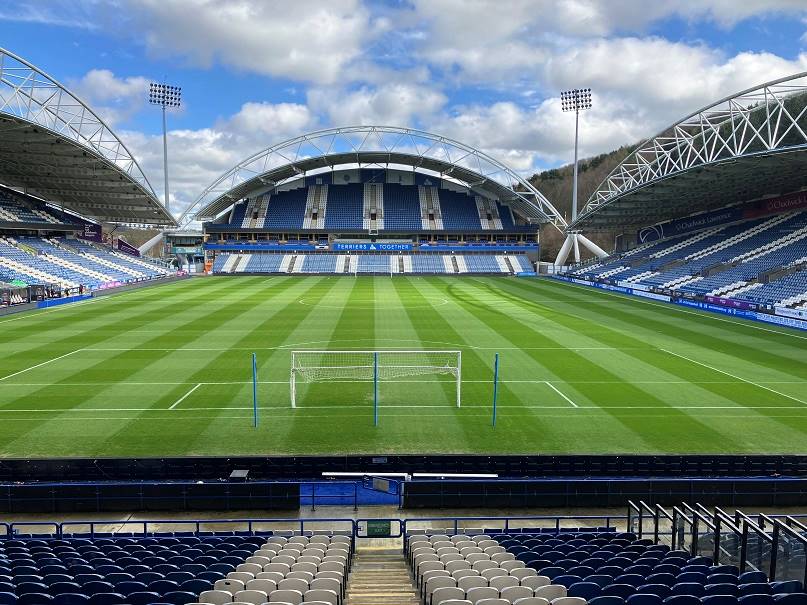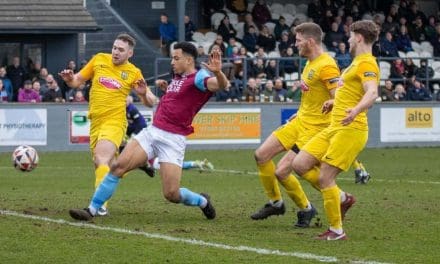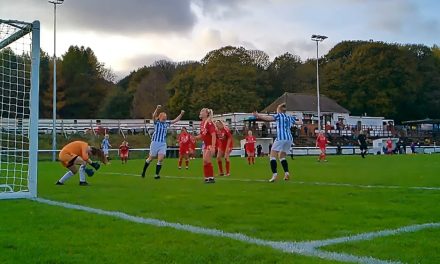The future of the John Smith’s Stadium remains unresolved in its 30th anniversary year and here Sir John Harman, a former leader of Kirklees Council and chairman of Kirklees Stadium Development Ltd for 20 years, reflects on lessons to take from the past.
Sir John and former Huddersfield Town chairman Graham Leslie CBE were the combined driving force behind the creation of the stadium in the early 1990s.
I see there’s been an event to mark 30 years since Huddersfield Town moved from Leeds Road to the new stadium. Pity, I’d have liked to have been invited.
As the chairman for over 20 years, and still in possession of a working memory, I might have had something to say.
On second thoughts, it’s probably better that I wasn’t. Because what we would have been celebrating was the sense of joint purpose that allowed the club and Kirklees Council together to do something that neither could have done alone.
And maybe I’d have said that that joint purpose has now passed into history, just as much as the old Leeds Road ground has.
For a while, everyone understood why the clubs and the council had to pool resources (and go together to funders like the Football Trust); for a while everyone understood why joint ownership was necessary; for a while everyone understood why the operation of the stadium was separate from the day-to-day running of either the clubs or the council.
The clubs could concentrate on their job, which is to run professional sports, the council could protect ratepayers’ funds.
For a while. But memories fade. Club owners like owning things. For well over a decade now, HTAFC has wanted to own the whole operation, lock, stock, barrel (there are quite a lot of those), catering, lettings, ground staff….as if they don’t have enough on their plate on the playing side.

Sir John Harman
Huddersfield Giants more recently have stated that they want their own stadium again. The council wants to wash its hands of all involvement (except, of course, the freehold).
Well might we look back longingly to 1994 when it was thought a huge advantage for our clubs NOT to have to carry stadium operations on their balance sheets.
I’ve watched all this with a sinking heart. I feel quite parental towards the stadium, which I saw through its birth, growing, and coming of age. So you may think these are the reflections of a grumpy old dad and you might have a point; up to a point.
There’s something more fundamental about all this, though, and that is the question – who really owns a football club? Not, who has the shares? But whose is it really?
The obvious answer is the body of supporters who follow the club’s fortunes, attend matches, may have season tickets; who look for the results every winter Saturday, who rejoice in success and weep in failure.
But it also belongs to the wider community, most of whom recognise that HTAFC and the Giants are somehow part of the fabric of who and what we are, even if they would never come to a game.
That’s why any local authority with a professional club in its area cannot disown it or stand aside from its fortunes.

The prime purpose of any council is to foster its place and its people, and in our culture few things are more important to a town’s sense of place than its football club.
Thirty years ago the clubs were dealt a winning hand with a state-of-the art stadium which allowed them to compete at the highest level and to focus on sporting performance.
Like all Town supporters I am both dismayed at the slide of the club, and angry at the decision making which has produced such disjointed and demoralised performances this past season.
The club can make a new start on the field; it’s much harder to see how the spirit of joint enterprise of 1994 can be rediscovered.

Fans celebrate Huddersfield’s Town’s old Leeds Road ground 30 years on



















